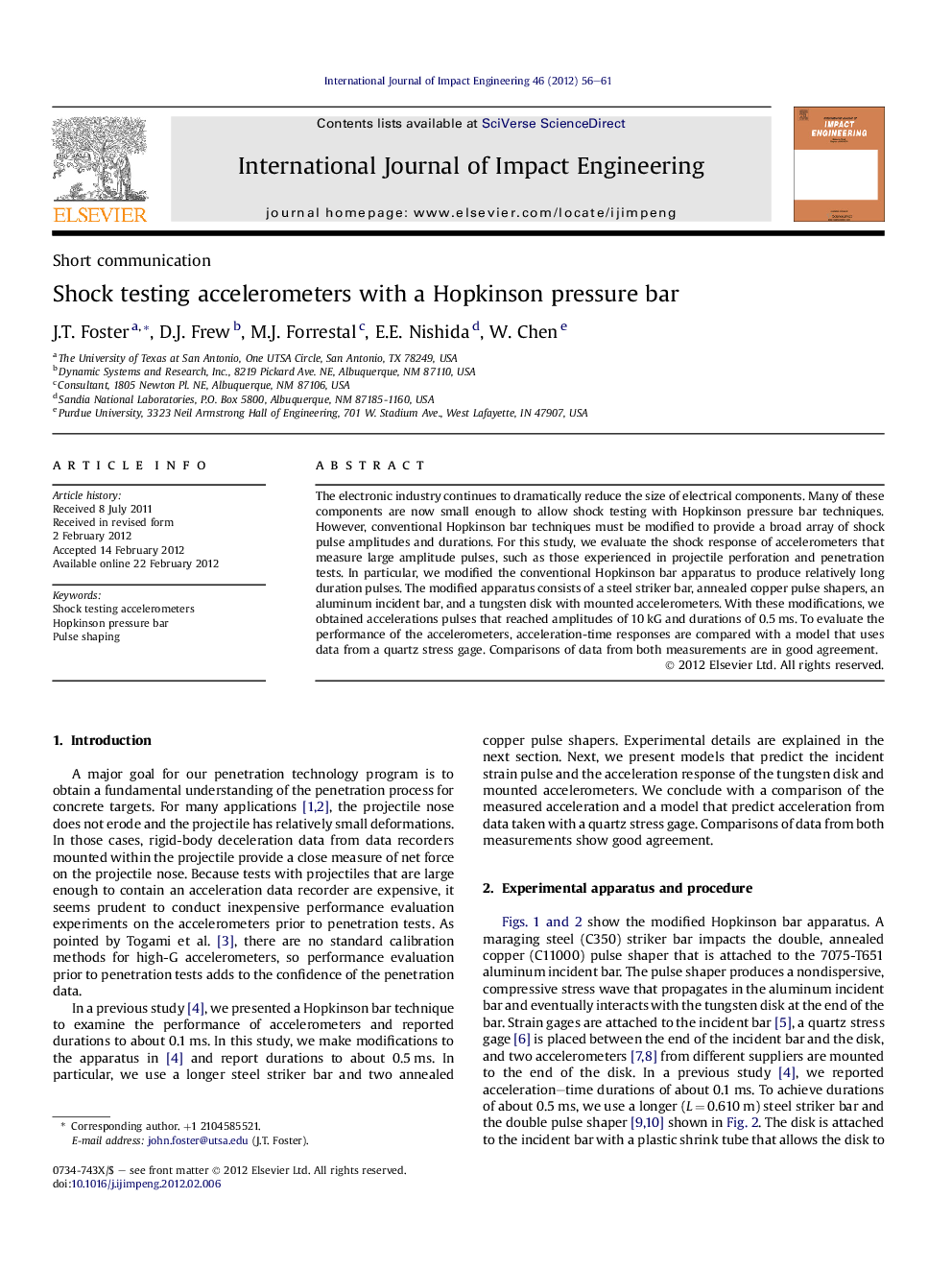| Article ID | Journal | Published Year | Pages | File Type |
|---|---|---|---|---|
| 776823 | International Journal of Impact Engineering | 2012 | 6 Pages |
The electronic industry continues to dramatically reduce the size of electrical components. Many of these components are now small enough to allow shock testing with Hopkinson pressure bar techniques. However, conventional Hopkinson bar techniques must be modified to provide a broad array of shock pulse amplitudes and durations. For this study, we evaluate the shock response of accelerometers that measure large amplitude pulses, such as those experienced in projectile perforation and penetration tests. In particular, we modified the conventional Hopkinson bar apparatus to produce relatively long duration pulses. The modified apparatus consists of a steel striker bar, annealed copper pulse shapers, an aluminum incident bar, and a tungsten disk with mounted accelerometers. With these modifications, we obtained accelerations pulses that reached amplitudes of 10 kG and durations of 0.5 ms. To evaluate the performance of the accelerometers, acceleration-time responses are compared with a model that uses data from a quartz stress gage. Comparisons of data from both measurements are in good agreement.
► We present analytical models and experimental methods to evaluate the performance of the high-G accelerometers (PCB 3991 and Endevco 7270). ► The experimentally verified models can be used to design the experiments and avoid many experimental trails. ► Aside from some high-frequency oscillations, measurements from Endevco and PCB accelerometers were in close agreement. ► In addition, both acceleration–time measurements were in close agreement with acceleration–time data calculated from a quartz stress gage.
